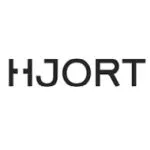On June 20, 2024 the Norwegian Water Resources and Energy Directorate (NVE) introduced a pro-posal for new price regulation in the district heating sector, following extensive work on the issue since November 2021. The proposal suggests maintaining a maximum price regulation but with sig-nificant modifications, positioning NVE as an active price regulator.
Currently, district heating prices are governed by § 5-5 of the Energy Act, which stipulates that the price cannot exceed the cost of electricity, including taxes such as the electricity tax and grid rent. Historically, NVE calculated the maximum price based on a monthly average of the electricity spot price and the applicable network tariff for the customer. However, changes in the regulation of network tariffs in June 2021 rendered NVE's calculation method obsolete, prompting a comprehensive review of the price regulation framework. In the interim, NVE has reverted to using data and methods from 2019. Additionally, the introduction of the electricity support scheme in 2021 brought about a sudden and significant alteration in the maximum price regulation for households by deducting the electricity support from the regulated price.
The uncertainty surrounding the regulation of district heating prices has posed significant challenges for district heating companies when assessing the profitability of potential investments. Thus, NVE's concrete proposal is a welcome development.
Details of the Proposal and Calculation of Maximum Price:
The proposal suggests that the maximum price should continue to track the electricity spot price, albeit without dependence on network tariffs and taxes. The specifics of the proposal are as follows:
- The maximum price will include a fixed component of 50 øre, varying with the electricity spot price. For example, a spot price of 0 kroner results in a maximum price of 50 øre, while a spot price of 20 øre leads to a maximum price of 70 øre.
- When the spot price exceeds 100 øre, the maximum price increase will be capped at 40%. Thus, a spot price of 120 øre would result in a maximum price of 158 øre.
- For negative spot prices, the reduction in the maximum price will also be limited to 40%. For instance, a spot price of -20 øre would lead to a maximum price of 42 øre.
More than just the numbers and factors proposed, the proposal suggests a shift in NVE's role from merely being a complaint authority to an active price regulator capable of adjusting "breakpoints" and the rate of increase. The criteria and frameworks for such adjustments are not detailed in NVE's proposal, other than suggesting that specific rules should be established. Clear frameworks for NVE's adjustment of the maximum price model are crucial for predictability for both district heating companies and customers. The work to establish such frameworks involves complex issues and should therefore commence promptly.
Depending on the scope of authority granted to NVE, an active role as a price regulator will necessarily require additional expertise and staffing at NVE. The proposal indicates that this might necessitate several man-years, although this has not been precisely estimated. Further insights into NVE's evaluation of these needs are anticipated.
Another significant and positive change is that the proposal allows for fixed-price agreements outside the maximum price regulation, a feature long requested by both district heating companies and customers, and frequently discussed with NVE and the Ministry over many years.
Other points from NVE's proposal include:
- The maximum price should be calculated on an hourly basis, necessitating new meters for customers currently without hourly measurement.
- Peak load heating, i.e., using district heating only for peak consumption, will remain outside the maximum price regulation.
- The annual fee for connection for customers with a connection obligation who do not use district heating will be removed.
- District heating concessionaires are required to clarify in advance of developments whether areas will be connected to district heating and, if so, commit to this.
- Rules for connection fees will be regulated by law.
It is now up to the Ministry of Energy to chart the course forward for the process. The changes will require amendments to the Energy Act and the establishment of more detailed regulations. It is hoped that work on concrete proposals for legislation and regulations will commence swiftly.
Read NVE's article on the proposal here.
The content of this article is intended to provide a general guide to the subject matter. Specialist advice should be sought about your specific circumstances.


